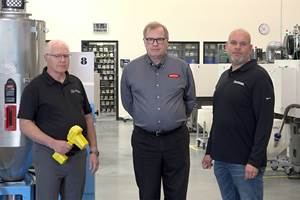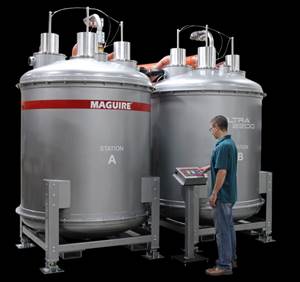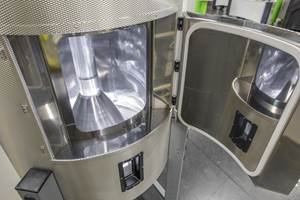Get Better At Drying
Editorial
Supplement coming in May will focus on this vexing problem.
I’ve been a journalist for two different plastics magazines over the last 27 years. During that period of time, I’ve heard over and over again—from materials suppliers, machine builders, and processors—that resin drying was among the most (if not the most) vexing technical problem in molding and extrusion plants today.
And this is not a material-specific issue. Rather, it seems to run the gamut of any kind of material that needs to be dried before processing. And frankly, I think the economic turndown a few years ago made matters a bit worse, as many processors were forced to downsize and lost some of their most senior, savvy technical people. You might be surprised at the number of emails I receive a month from readers asking what they need to know to dry this or that material. Or you might not be surprised at all.
We’re aiming to do something about this knowledge void. The May issue of Plastics Technology will come to you in a polybag together with another publication from us—we call it a supplement—that will focus specifically on drying. Not about new products for drying—we devote plenty of editorial coverage to that subject in the magazine. This supplement will focus on the why’s and how’s of drying. If you run materials that need to be dried, you’ll want to read this special publication as soon as you get it. And you’ll want to keep it, because the information in it will still be useful days, weeks, months, and years later.
Let me give you a little preview of the contents of this supplement. First, we will have a feature authored by noted consultant John Bozzelli, who authors our Injection Molding Know-How column every issue, on why you need to dry resins, what happens if you don’t do it properly, and how to specify, operate, and maintain a dryer. John will even provide a handy-dandy checklist of drying do’s and don’ts, based on his decades of experience teaching Scientific Molding to processors across the country.
A second article will be authored by yet another name familiar to readers of Plastics Technology: Mike Sepe, a guru on the subject of polymers, who writes our regular Materials Know How column. Mike will describe in detail what you need to know to dry a range of specific materials, including PET, PC, ABS, PLA, and some of the trickier ones such as nylon and TP urethane.
The third component of this supplement will focus on best practices from processors who are proficient in drying and skilled at evaluating, operating, and maintaining their dryers, and who know when they need additional drying capacity. This is real-world, processor-to-processor advice right from the plant floor. We think you will find it particularly handy.
So please be on the lookout for this supplement that will come with the May issue of this magazine. I think you’ll want to read it. And keep it. And hopefully refer to it time and again.
The cover image of this supplement will look like the one on this page. Of course we took some creative license with this image. Surely no one would ever think of drying their material with a salon blow dryer. Would they?
Related Content
How to Effectively Reduce Costs with Smart Auxiliaries Technology
As drying, blending and conveying technologies grow more sophisticated, they offer processors great opportunities to reduce cost through better energy efficiency, smaller equipment footprints, reduced scrap and quicker changeovers. Increased throughput and better utilization of primary processing equipment and manpower are the results.
Read MoreCaptive Molder Beefs Up Auxiliaries to Boost Quality, Consistency
SeeScan adds conveying, drying, feeding and chilling technologies to improve quality — and enhance employee safety — in production of its underground/underwater inspection systems.
Read MoreHigh-Output Dryer Requires Less Energy
Maguire’s ULTRA 2200 is designed to meet high throughput requirements with a max capacity of 2200 lb/hr.
Read MoreResin Drying Hoppers Offer More Energy Efficiency, Durability and Cleanability
NPE2024: Drying hoppers provide improved energy efficiency and a durable textured metal exterior finish. Thicker insulation provides a cooler working environment, while polished stainless steel interiors resist material entrapment, and make cleanouts and changeovers faster.
Read MoreRead Next
People 4.0 – How to Get Buy-In from Your Staff for Industry 4.0 Systems
Implementing a production monitoring system as the foundation of a ‘smart factory’ is about integrating people with new technology as much as it is about integrating machines and computers. Here are tips from a company that has gone through the process.
Read MoreHow Polymer Melts in Single-Screw Extruders
Understanding how polymer melts in a single-screw extruder could help you optimize your screw design to eliminate defect-causing solid polymer fragments.
Read MoreWhy (and What) You Need to Dry
Other than polyolefins, almost every other polymer exhibits some level of polarity and therefore can absorb a certain amount of moisture from the atmosphere. Here’s a look at some of these materials, and what needs to be done to dry them.
Read More









